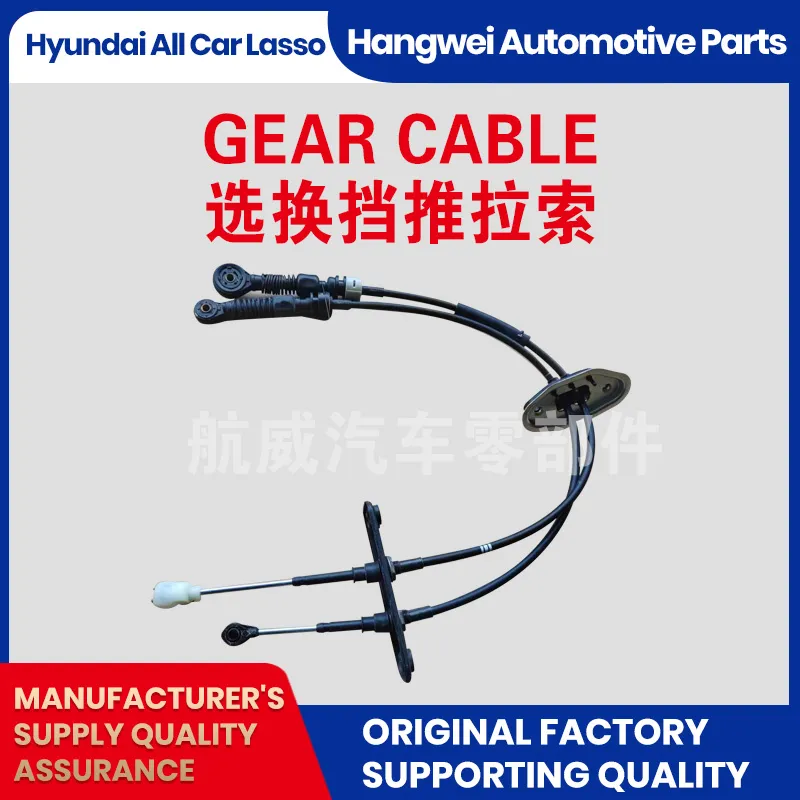Throttle Cable Connection System for Enhanced Performance and Control
Understanding Throttle Cable Linkage Importance and Functionality
Throttle cable linkage is a crucial component in the operation of many vehicles, especially those powered by internal combustion engines. This system plays a vital role in controlling the engine’s power output and, consequently, the overall performance of the vehicle. In this article, we delve into the mechanics of throttle cable linkage, its importance in automotive engineering, and the common issues associated with it.
What is Throttle Cable Linkage?
Throttle cable linkage refers to the system of cables and connecting mechanisms that link the accelerator pedal to the throttle body of an engine. When a driver presses the accelerator pedal, this action pulls the throttle cable, which opens the throttle valve located in the intake manifold. This process allows more air (and fuel) into the engine, increasing the engine’s speed and power.
Most modern vehicles use electronic throttle control (ETC) systems that employ sensors and motors instead of a mechanical cable linkage. However, many older vehicles and some current models still rely on traditional throttle cable linkages. Understanding how these systems operate is important for both mechanics and vehicle owners.
The Mechanics of Throttle Cable Linkage
A typical throttle cable system consists of several components
1. Accelerator Pedal The driver’s input begins here. Pressing the pedal applies force to the cable. 2. Throttle Cable This flexible cable is the conduit that transmits the movement from the accelerator pedal to the throttle body. The cable needs to be adjusted properly to ensure smooth operation. 3. Throttle Body This is where the air enters the engine. The throttle valve—controlled by the cable—regulates airflow based on the accelerator position. 4. Return Spring This spring ensures that the throttle valve returns to a closed position when the accelerator pedal is released.
Mechanics of throttle cable operation involve tension and response. A properly calibrated throttle cable ensures that the driver’s input translates accurately to engine performance. If the cable is too loose or too tight, it can lead to unresponsive acceleration or even a stuck throttle, which poses serious safety risks.
Importance of a Functional Throttle Cable Linkage
throttle cable linkage

The throttle cable linkage is more than just a mechanical connection; it is a critical element affecting vehicle dynamics. Here are a few reasons for its importance
1. Driver Control A responsive throttle is essential for driver control. Smooth acceleration, especially in overtaking scenarios or merging onto highways, depends heavily on the efficacy of the throttle cable linkage. 2. Fuel Efficiency An efficiently operating throttle can contribute to better fuel economy. Proper calibration allows the engine to receive the right amount of air needed for optimal combustion, reducing excess fuel consumption.
3. Engine Performance For performance vehicles, the throttle linkage’s responsiveness can greatly influence acceleration and speed. In motorsport applications, the throttle must react instantaneously to driver commands for competitive performance.
4. Safety A malfunctioning throttle cable can lead to uncontrolled acceleration or hesitation, both of which can be dangerous in traffic situations. Ensuring that the throttle cable and its linkages are in good condition is vital for safe vehicle operation.
Common Issues and Maintenance
Like all mechanical components, throttle cable linkages can experience wear and tear. Common problems include fraying cables, stiffness, and improper adjustment. Regular inspection and maintenance can prevent these issues. Signs of problems might include
- Unresponsive accelerator pedal - Jerky acceleration - Unusual noises from the throttle area
Maintaining the throttle cable linkage involves checking for frays, ensuring smooth operation, lubricating the cable periodically, and making necessary adjustments to ensure proper tension.
Conclusion
Throttle cable linkage plays a critical role in automotive performance, safety, and efficiency. Understanding its mechanics and importance helps vehicle owners and mechanics alike to maintain their vehicles better. As technology advances with electronic throttle control systems gaining prominence, knowledge of traditional throttle systems remains relevant, particularly for enthusiasts and mechanics working with classic vehicles. Regular maintenance and attention to this essential system can lead to enhanced performance and a safer driving experience.
-
Workings of Clutch Pipe and Hose SystemsNewsJun.04,2025
-
The Inner Workings of Hand Brake Cable SystemsNewsJun.04,2025
-
The Secrets of Throttle and Accelerator CablesNewsJun.04,2025
-
The Hidden Lifeline of Your Transmission Gear Shift CablesNewsJun.04,2025
-
Demystifying Gear Cables and Shift LinkagesNewsJun.04,2025
-
Decoding Clutch Line Systems A Comprehensive GuideNewsJun.04,2025
